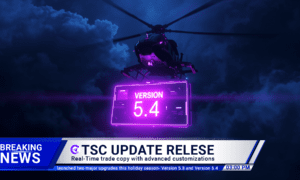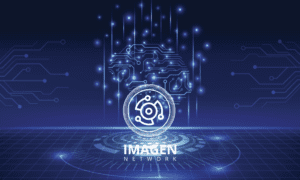Introduction
The Software Development Engineer in Test (SDET) role emerged as a response to the evolving needs of modern software development and testing practices.
An SDET bridges the gap between development and QA by building and maintaining automated functional tests and overseeing test automation frameworks.
SDETs play a critical and diverse role concerning continuous integration and continuous delivery (CI/CD). They help ensure that software is tested efficiently, issues are identified early, and releases are reliable and high-quality.
This blog explores the benefits of continuous testing and key responsibilities of an SDET within CI/CD pipelines.
Understanding SDET, Continuous Integration & Continuous Delivery
What is an SDET?
A Software Development Engineer in Test (SDET) offers coding expertise with testing skills to enhance the quality assurance process. With strong programming knowledge and insight into software development and testing, they act as a crucial link between developers and QA teams
What is Continuous Integration (CI)?
CI is a development practice in which developers merge code changes frequently (often daily) into a central repository. Builds and automated tests run immediately, catching bugs early and simplifying integration by reducing significant, error-prone updates.
What is Continuous Delivery (CD)?
An automated approach that extends CI by preparing and testing code for reliable deployment to staging or production environments. It ensures changes can be released quickly, consistently, and with minimal human intervention.
How Does the Role of SDET Fit into CI/CD?
SDETs enable efficient, reliable, high-quality software delivery by embedding automated testing within the CI/CD pipeline. Their involvement ensures that every code change is thoroughly tested before release.
Key responsibilities include:
- Continuous Integration (CI):
○ Implement automated tests triggered by every new code commit.
○ Build and verify code changes to maintain application stability.
- Continuous Delivery (CD):
○ Ensure validated code is ready for deployment to staging or production.
○ Maintain high test coverage and optimize testing workflows.
- Performance & Scalability Testing:
○ Run load and performance tests to identify bottlenecks.
○ Analyze results and recommend optimizations.
SDETs help drive faster releases and better software quality.
Top 6 Benefits of Continuous Testing
- Accelerated Efficiency: Automation reduces manual testing time, allowing teams to concentrate on innovation and complex problem-solving, speeding up the entire delivery pipeline.
- Proactive Bug Detection: Bugs are identified early in development, lowering the cost of fixes and supporting a shift-left testing approach.
- Consistent Code Quality: Frequent validations ensure high code quality is maintained across each iteration and release.
- Cross-Team Collaboration: Embedding DevOps testing encourages developers and QA teamwork, promoting shared accountability.
- Rapid Releases: Faster feedback loops support frequent, reliable deployments.
- Operational Stability: Continuous testing guards against regressions and ensures system reliability in production environments.
How do SDETs Enable Continuous Testing in CI/CD Pipelines?
Here are the 10 steps SDETs follow to enable continuous testing in CI/CD pipelines.
1. Define Clear Testing Objectives
SDETs establish specific goals for each testing stage, such as detecting bugs early, achieving code coverage targets, and verifying functionality. They also define quality benchmarks for performance, security, and usability.
Align testing efforts with business objectives to maintain focus. Use these goals to measure testing success and guide continuous improvements.
2. Select the Right Testing Tools
They choose tools suited for each DevOps phase. From version control (e.g., Git), CI servers (Jenkins), build tools (Maven), and test automation frameworks (Selenium) to deployment and monitoring tools (Kubernetes, New Relic).
Ensure tool compatibility and integration to maintain a seamless and efficient continuous testing workflow across environments.
3. Integrate Test Automation in CI/CD Pipelines
SDETs automate functional, regression, and integration tests. Trigger test suites with every code commit and deploy tests across environments using tools like TestRail.
Ensure consistent test configurations, generate detailed reports, and maintain full traceability. Automation increases speed, reduces human error, and supports continuous quality feedback throughout development cycles.
4. Implement Quality Checks
SDETs automate quality checks to ensure code meets predefined criteria before progressing through the pipeline. These can include unit test coverage thresholds, pass/fail rates, performance metrics, and compliance checks.
Quality checks act as safeguards, reducing defect propagation and improving reliability and security across all delivery stages.
5. Set Up Notification Systems
They implement alerting mechanisms for test failures or build issues to ensure rapid resolution. Use tools like TestRail to track results and notify developers in real time.
Parallel testing combined with prompt notifications accelerates feedback cycles, reduces bottlenecks, and minimizes deployment delays due to unresolved test failures.
6. Establish Feedback Loops
Using performance monitoring and log analysis tools like New Relic or DataDog, create strong feedback loops between development, QA, and operations. Set alerts for anomalies and review feedback regularly.
Quick feedback enables rapid problem resolution, improves cross-team visibility, and supports proactive risk management during and after deployments.
7. Create Staging Environments
SDET is responsible for developing realistic staging environments that mirror production settings for pre-deployment testing. To simulate real-world scenarios, SDET can use platforms like Docker or AWS.
This helps uncover hidden bugs and configuration issues, ensuring software behaves as expected before it reaches users, thus reducing post-deployment incidents and rollback risks.
8. Reporting & Documentation
Generate comprehensive test reports covering code coverage, pass/fail status, and environment-specific results. Use tools like TestRail to consolidate manual and automated testing data.
Detailed documentation ensures transparency, informs stakeholders, supports audits, and provides a historical view of testing performance to guide future optimizations.
9. Foster a Collaborative Culture
Introduce QA early in the development lifecycle to promote shared ownership of quality. Encourage collaboration between developers, testers, and operations.
Assess KPIs regularly, improve team alignment, and instill a DevOps mindset focused on automation, transparency, and continuous learning to strengthen team accountability and innovation.
10. Iterate & Improve
SDETs continuously refine their testing strategy using feedback, test results, and evolving business needs. Identify gaps, update tools and processes, and optimize test cases.
A culture of iteration ensures the testing framework evolves alongside software changes, maintaining high quality while adapting to dynamic project demands.
Conclusion
SDETs play an indispensable role in modern DevOps-driven software development. By seamlessly integrating automated testing into CI/CD pipelines, they ensure software quality, stability, and faster delivery.
SDETs drive the continuous testing strategy that supports rapid and reliable software releases, from defining clear testing objectives to fostering collaboration and continuous improvement.
Their expertise in development and QA enables proactive bug detection, efficient performance testing, and rigorous quality control across all pipeline stages.
As businesses aim to accelerate digital transformation, SDETs’ contribution becomes crucial in maintaining agility without compromising on software integrity or user experience.
Looking to build a robust CI/CD pipeline? Maruti Techlabs offers top-tier DevOps Consulting and Quality Engineering Services tailored to your needs. As a leading software development company in Dallas, we help you implement continuous testing strategies that drive speed, quality, and reliability. Let’s future-proof your development process—talk to us today!





























